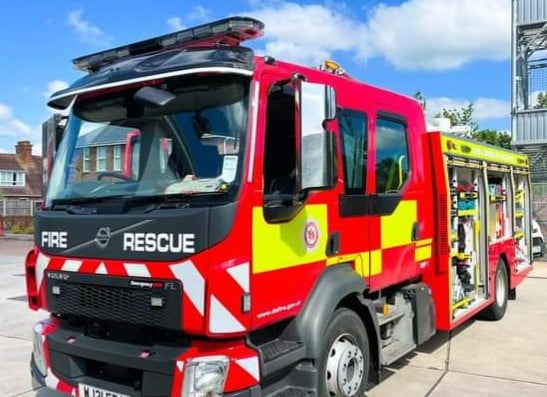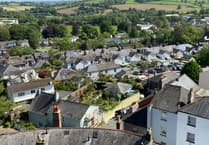Devon & Somerset Fire & Rescue Service have the largest fleet outside of London and are investing in their fire engines to meet the changing risks within all communities.
This is part of a 10-year fleet replacement programme to ensure they have the most modern equipment and fire engines with the latest technology to protect communities and firefighters. The aim is for each station to have the best vehicle(s) to respond to the risks in their area. When Fire Control receive a call to an incident the nearest fire station does not respond in isolation, as they often work alongside neighbouring stations. This ensures all the correct equipment and firefighters arrive at an incident quickly. They routinely review risks across the Service so they can make an informed decision in changing the location of a fire engine based on the whole of the Service and their priorities. This is matching resources to the ever-changing risks in the communities. They decide what type of vehicle is needed using risk analysis and professional knowledge. You can find out more about the risks they face as a Service in their Community Risk Management Plan. When developing this plan, they consulted with staff and communities.
The new Medium Rescue Pump carries the latest equipment, including the latest battery-operated tools. Each vehicle is fitted with a new 52mm lay flat hose, 70mm lay flat hose, and 22mm high-pressure hose reel. These allow them to fight larger fires more effectively, particularly for wind-driven, large fires or basement fires.
For the first time, the MRP is equipped with a full foam system that deals with solid and liquid flammables. Enabling firefighters to put out fires in a variety of ways. The 4X4 MRP carries the same equipment and provides extra capability during severe weather conditions or assists in locations where a standard two-wheel drive may not be able to access.
Our Light Rescue Pumps are shorter than the MRP by 80cm, lighter, and more agile. So, they are better at responding where road access may be restricted, such as when there are parked vehicles on the road, streets are narrow or the destination is in the countryside along narrow roads. The LRP has the latest battery-operated tools. These include a cutter, spreader, and a ram for Road Traffic Collision (RTC) rescues. The LRPs also carry a state-of-the-art compressed air foam system and a fog spike. This enables crews to fight the fire from the outside of a building so a property can be saved more effectively, firefighting time is dramatically cut, and firefighters are safer.
The Rapid Intervention Vehicles are smaller, more agile vehicles that can access narrower roads and sometimes arrive at incidents quicker larger appliances. Anyone familiar with the road network may have seen a lorry or bus trying to manoeuvre through country lanes or congested roads in the summer. The traditional-sized fire engines have the same issue so they have developed fire engines that also suit smaller roads. They carry the latest equipment needed to provide the first response to an incident such as the latest battery-operated tools RTC cutting equipment, and a fog spike. Also breathing apparatus sets, lightweight fire kit, digital radios, and thermal image cameras. All RIVs have a 9m ladder.




